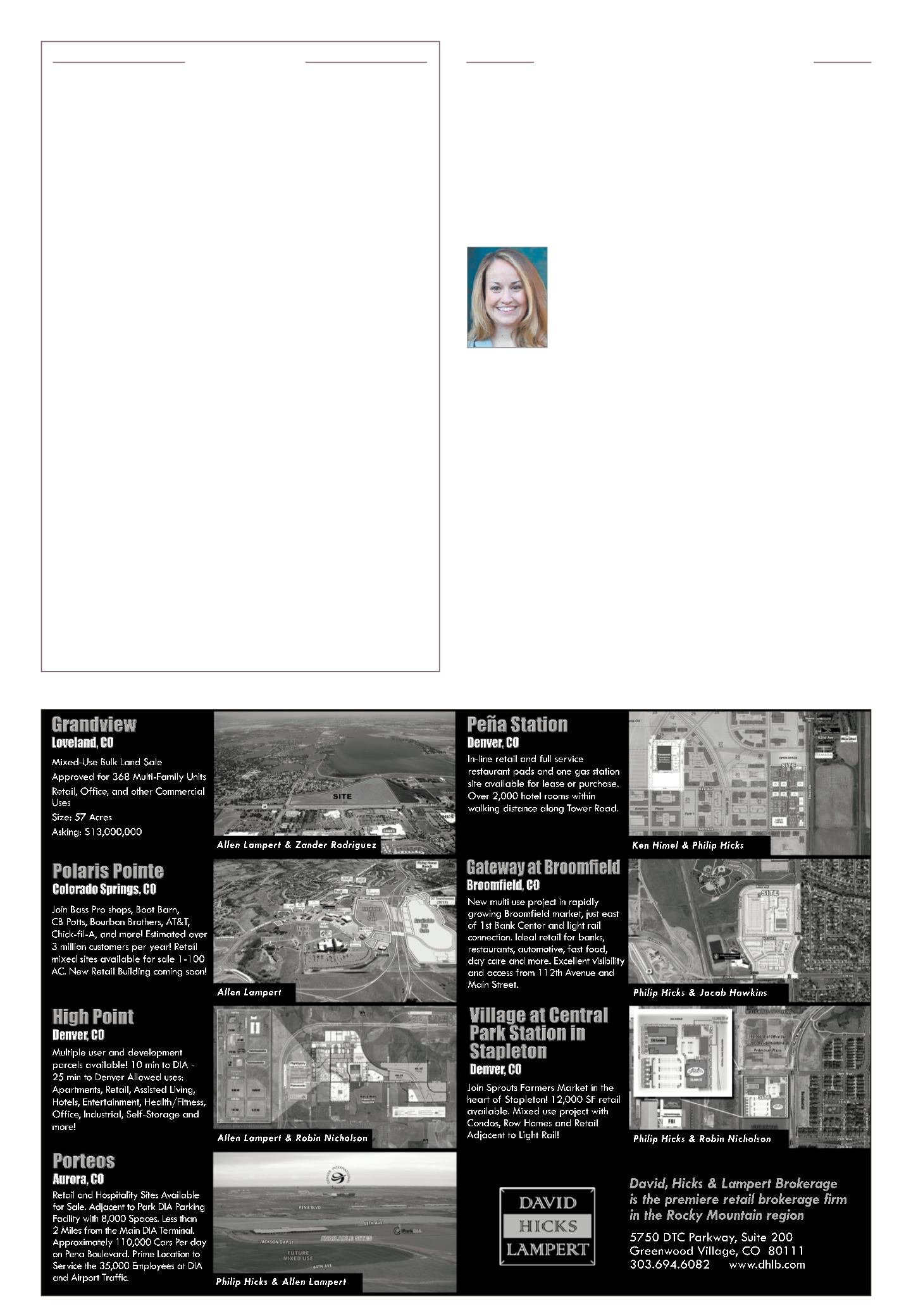

Page 2
— Retail Properties Quarterly — November 2017
www.crej.comContents
Letter from the Editor
A
s the debate rages on regard-
ing the future of brick and
mortar in the face of e-com-
merce, an alternative discus-
sion is gaining momentum.
This is the phenomenon of online
retailers moving into physical stores.
Lisa Macneir’s article on Page 16 high-
lights the success three online-only
retailers –Warby
Parker, Bonobos
and Indochino –
are enjoying after
establishing physi-
cal stores.The most
discussed online
retailer making a
splash in the real
estate community is Amazon, through
its purchase ofWhole Foods, which
gives the company more than 450
storefronts across the nation.
While researching for this issue,
I came across a fascinating article
inThe Atlantic, written by Derek
Thompson, titled, “The history of Sear
predicts nearly everything Amazon is
doing.”The article drewmany parallels
between the two retailers, and offered
insights that can transcend the brand
and be applied to the larger pool of
online retailers moving to brick and
mortar.
A 100 years ago, Sears, Roebuck &
Co. was the No. 1 mail-order retailer
in the nation, with a famous cat-
alog-ordering system that saw its
revenue grow from about $750,000
to about $38 million from 1895 to
1905, according to the article. After
firmly cementing itself as the mail-
to-consumer behemoth, the com-
pany branched out to brick-and-
mortar stores.
According to the article, the com-
pany strategically expanded and built
stores based on data from the U.S.
Census, following national migration
from farms to cities and then to sub-
urbs. Between 1925 and 1929, 300 Sears
stores cropped up across the nation.
As it expanded, the company began to
branch out into adjacent businesses.
“It’s remarkable how Sears’s rise
anticipates Amazon’s,” the article
states. “The growth of both companies
was the result of a focus on operations
efficiency, low prices and a keen eye on
the future of American demographics.”
While there were growing pains in
the process of this expansion, Sears,
Roebuck & Co. managed to not can-
nibalize its catalog business with a
physical presence for years to come.
It’s ironic now that the latest itera-
tion of retail trends – the move away
from big-box retailers selling every-
thing – is causing the once-giant retail-
er to scramble and try to stop six years
of diminishing sales and profit loses.
While its staff has been cut by more
than 200,000 employees, the company
reports it is executing a turnaround
plan.
Time will tell if the company can
reinvent itself once more – just as time
will tell how today’s online-only retail-
ers signing leases will do. If they learn
from history, they should recognize the
inevitable growing pains that accom-
pany this change, while finding ways
to gain loyalty by bringing more conve-
nience to their customers.
Michelle Z. Askeland
maskeland@crej.com 303-623-1148, Ext. 104 Lessons from Sears Denver’s retail market riding Rocky Mountain highs Ryan Bowlby and Drew Isaac Why dollar stores are the retailers of the future Zach Wright Don’t overcommit to fast-casual dining tenants Allen Ginsborg The art of curating: Perfecting your tenant mix John Livaditis Retailer perspective: 3 tips for project success Chris Cheek Building market halls with personality, profitability Chris Haugen Clicks to bricks: The next e-commerce frontier Lisa Macneir Retail design in a transformational market Bruce McLennan Recognize insurance as an asset, not a liability Peter O’Brien Where insights and knowledge are always in store Diana Fiore 4 6 8 10 12 14 16 18 20 22















